CNBC upgrades iconic Studio A with new brand, latest in display tech
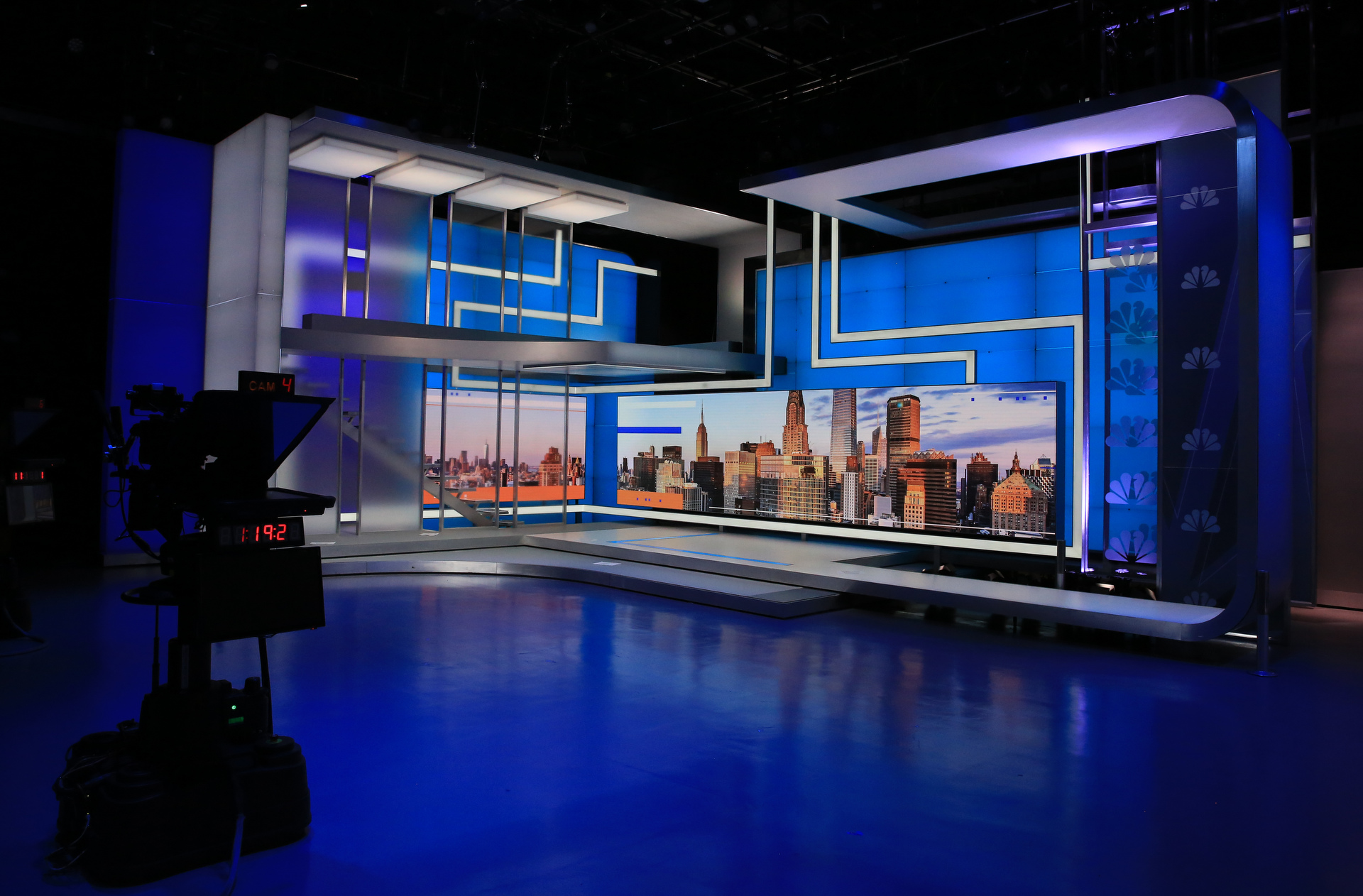
Subscribe to NCS for the latest news, project case studies and product announcements in broadcast technology, creative design and engineering delivered to your inbox.
CNBC recently completed a major renovation of its largest studio, Studio A. The redesign brings a fresh, modern look to the 7,000 square foot space while better integrating it visually with CNBC’s recent on-air brand refresh.
Studio A launched in 2003 with the network’s move from Fort Lee to Englewood Cliffs, New Jersey, and is an iconic piece of the network’s on-air identity, given its location adjacent to the CNBC newsroom.
“It was really a very deep collaboration with the Art Department. It’s the deepest collaboration we’ve ever had,” said Steve Fastook, CNBC, SVP, technical and commercial operations. “It is going to give us the ability to make our talent pop, the set colors are going to pop.”
“This is the first time we really worked with the overall design team to integrate a set look and design that fits into the brand,” said Andy Barsh, VP, production operations and strategic technology.
The project was sparked by replacing an aging projection video wall. However, the project expanded into a top-to-bottom revamp to create a brighter and infinitely more flexible studio environment attuned to CNBC’s new on-air vision.
Gone are the dark floors and cluttered backgrounds of old. The new set features expansive LED video walls and integrated LED lighting that can shift colors in an instant.
“Now you can program the video, you can program the colors, you can program the foreground bands, you can program the colors in the stage. All of that is buildable and is attached to the same technology that we use for everything else,” Fastook explained.
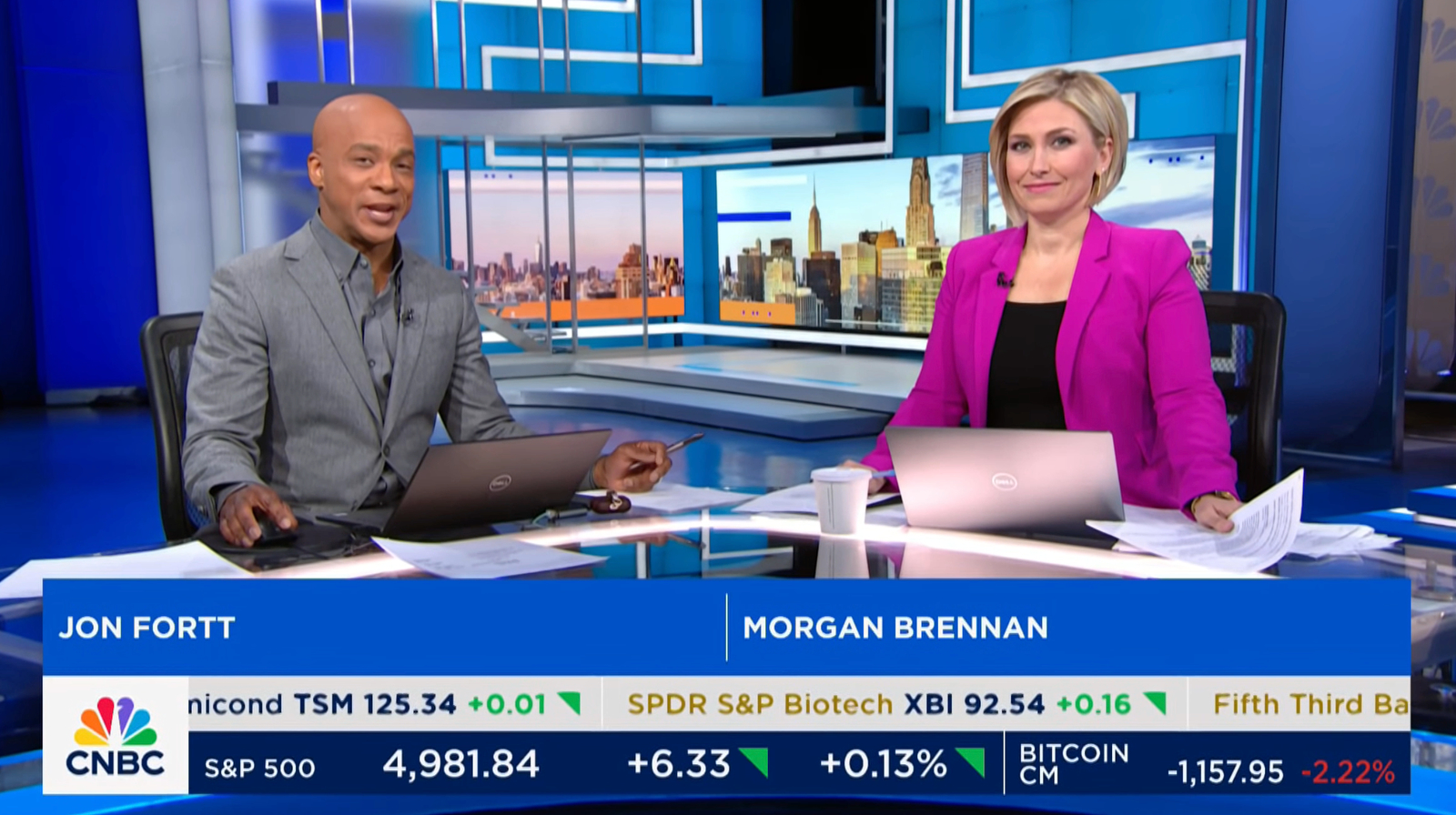

The new color palette and removal of excess return the set’s focus on the talent with clean backdrops that match the network’s new motion graphics. Richer wood tones and vertical elements were also replaced with lighter elements that better reflect lighting to add depth to shots.
“It’s going to look familiar… but we’re shooting all of the shows from angles we’ve never seen in the studio,” said Barsh. “There will be a familiarity to the audience, but it is going to look different. It’s going to look refreshed.”
Technology to tell the story
Studio A’s primary area now features a 5×5 and 12×5 array created from Planar TVF Series LED at a 1.5 pixel pitch.
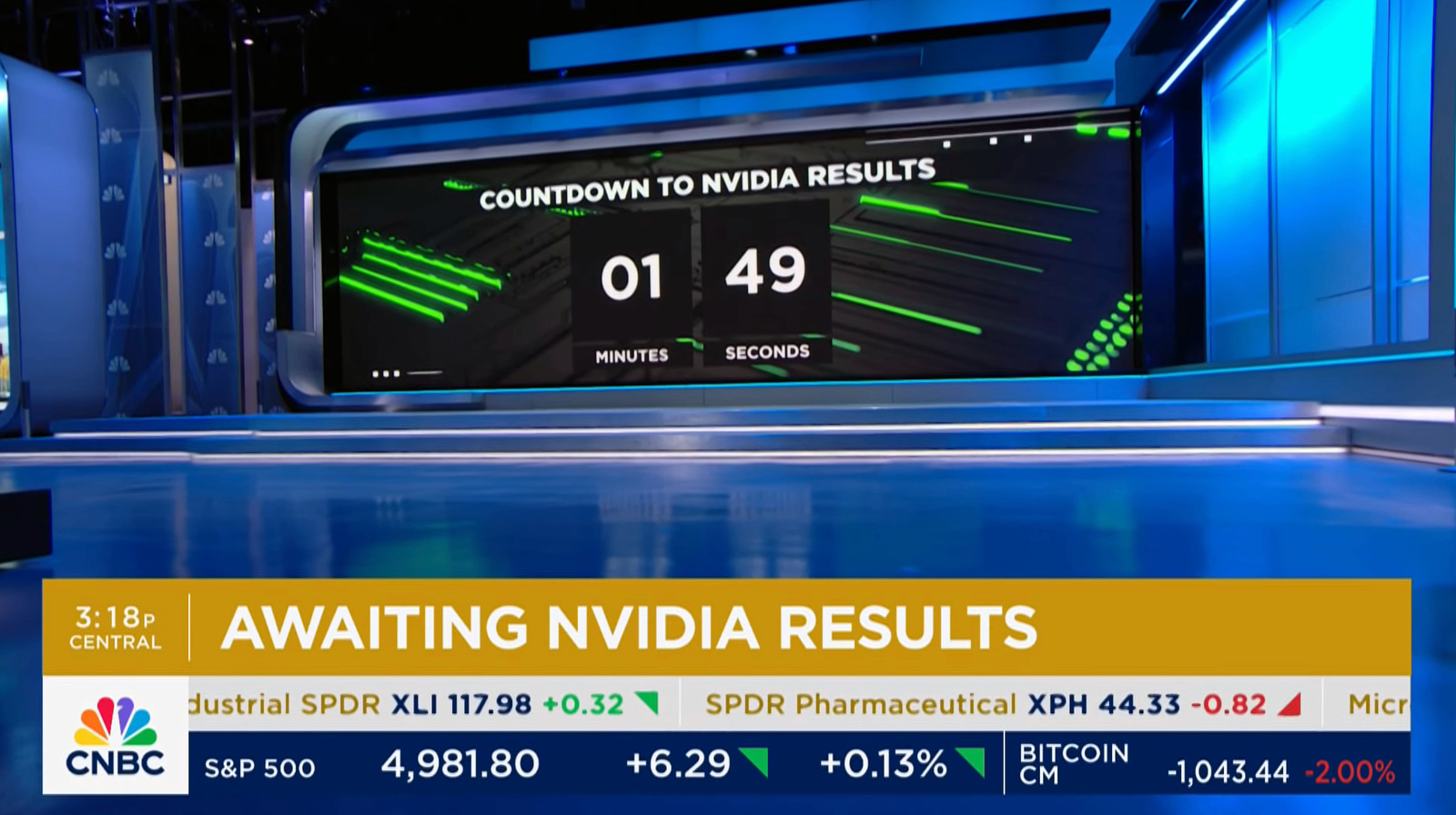

A secondary video wall features a 16×8 array, using the same 1.5 pixel pitch panels, with a large riser to accommodate future programming such as town halls or interviews.
“With the new LED walls, we can put talent right in front of them and light them, which was unheard of with projection technology. You just couldn’t put talent anywhere near the wall. So this has given us the ability to really create these visual elements behind our talent,” said Fastook.
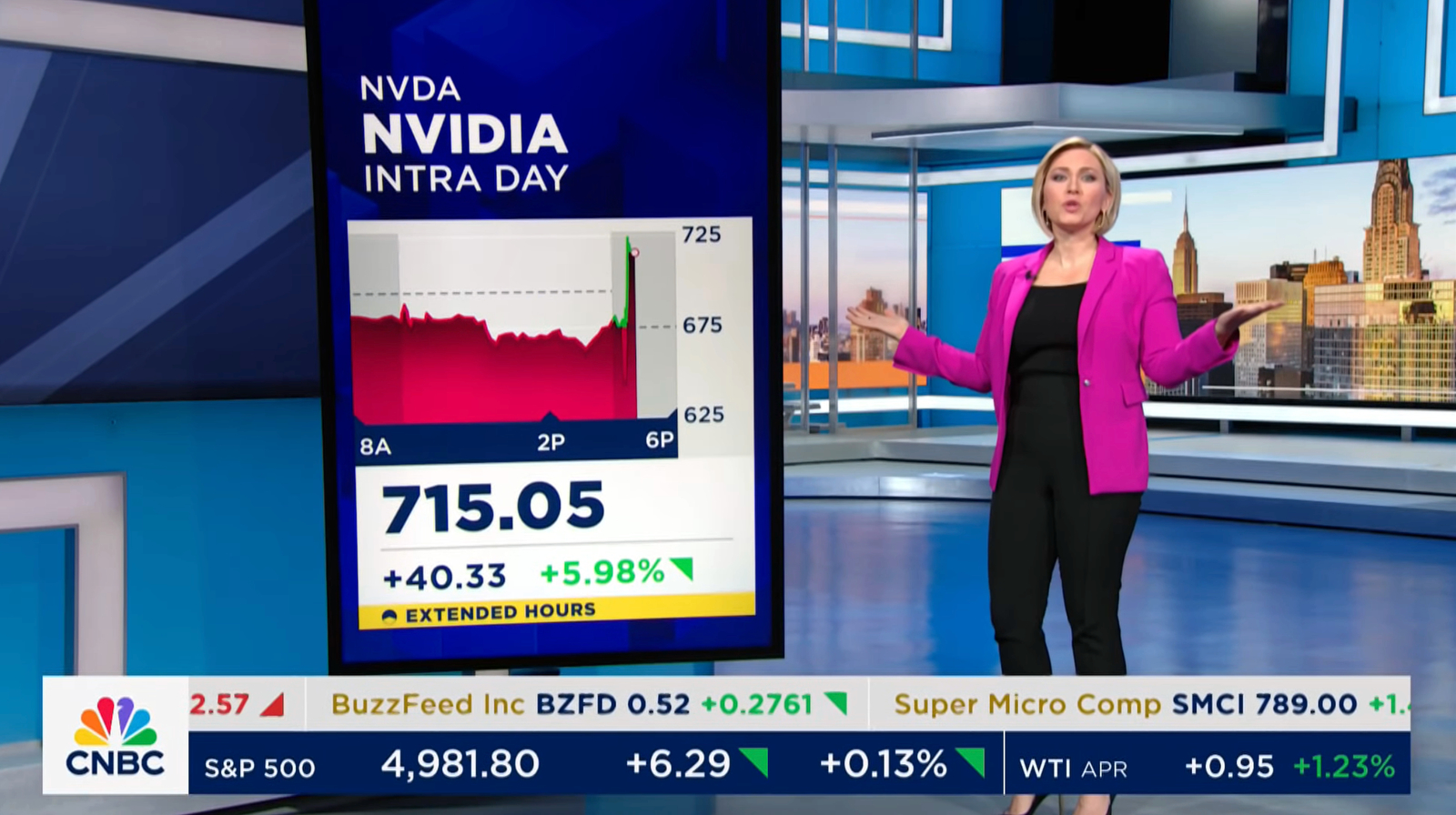

Adding flexibility, additional LED elements have been placed around the space, including a pivoting vertical monitor for bump and toss shots.
Breaking down the data
Behind the scenes, the upgrades take advantage of NBC’s Sync system, an agnostic controller for the network’s render engine and graphics playout system, that launched along with the new CNBC on-air graphics.
Sync white labels Vizrt’s Viz Engine, making it easy for talent, producers and technical directors to interact with real-time data and visual elements in an intuitive interface.
“Sync allows you to queue up elements. It allows you to call templates up. It allows you to call real-time charts and boards up and data charts with an intuitive interface that it’s almost like an editorial interface,” Fastook said. “That allows you to make decisions based on markets and stock prices, and it allows you to stack up your charts both in advance and in real-time.”
In the near future, the studio will have a chromakey area added for augmented reality and virtual production, leveraging Sync and the Unreal Engine.
“The goal is to use the dimensionality of AR to help tell the story. What’s the third dimension?” Barsh explained. “I think the dream response is, ‘I didn’t expect to see that.’ So that you can get somewhere within the data and say, ‘What is the driver of this price?'”
CNBC has been on the leading edge of utilizing augmented reality to illustrate concepts and bring market data to life. The new green screen space will take this to the next level with virtual graphics responsive in real-time to on-air discussions, controlled by a tablet the talent can use.
Continuity in change
While Studio A sports modern upgrades, the redesign purposefully maintained connections to CNBC’s classic studio aesthetic. Many existing structural elements were preserved or refreshed, enhanced by technological upgrades. The sleek makeover builds on the best of CNBC’s iconic style.
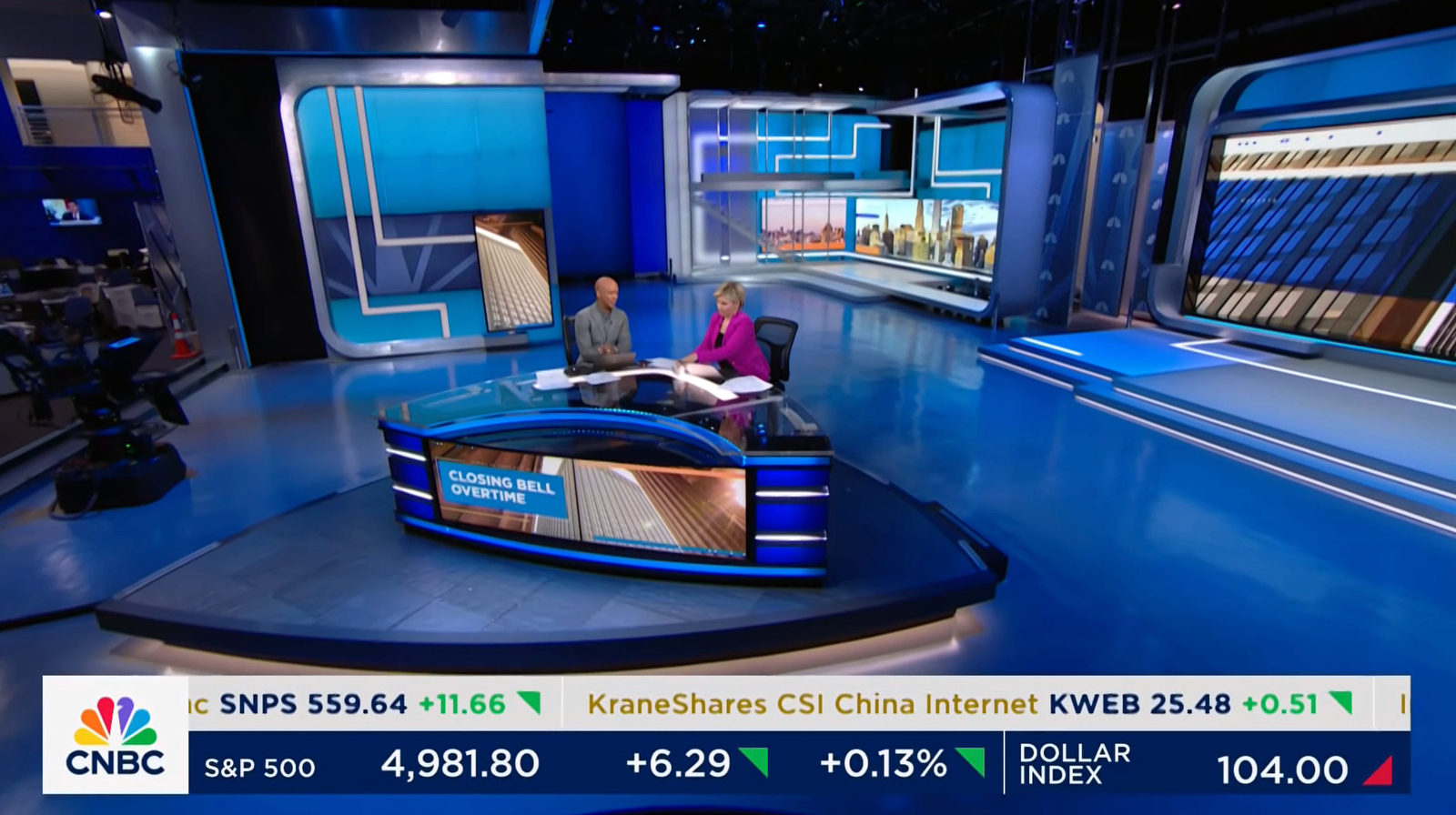

Studio A remains home to the morning program “Worldwide Exchange,” daytime markets update “The Exchange” and the evening show “Closing Bell: Overtime.” But armed with cutting-edge tools, the flexible space can adapt its look on short notice as needed for any NBC property.
The set was designed by John Casey with fabrication by the Telemundo Scenic Fabrication Shop in Miami, keeping the project within NBCUniversal.
“It was a great partnership and a way to keep their business thriving, keeping it in the family, and it was a way for us to control and understand our costs,” said Barsh.
With its new modernized Studio A, CNBC can continue pushing boundaries on how business news and financial markets are covered. The network has a legacy of innovating with technology to bring greater understanding to complicated narratives. Now driven by tighter collaboration between broadcast operations and creative, the reinvented flagship studio positions CNBC to craft content as visually impactful as it is insightful.
“It’s going to help tie us back into the brand,” Barsh said. “I think a successful set design is you’re not thinking about the set design. It just looks like it belongs.”
Subscribe to NCS for the latest news, project case studies and product announcements in broadcast technology, creative design and engineering delivered to your inbox.







tags
Andy Barsh, CNBC, Epic Games Unreal Engine, john casey, john casey production design, Planar, Steve Fastook, Telemundo Scenic Fabrication Shop, The Exchange, Vizrt, Vizrt Viz Engine
categories
Cable News, Heroes, News Set Design, Set Design, Studio Technology